
The myths and tales of Ancient Greek and Roman Gods have been the inspiration for so many different forms of art over the centuries. From more recent movies and books to statues spread across the globe, the feats of Perseus, Hercules, Hades, and many many other legendary characters have been engraved in the history of art. Here are 15 intricate oil paintings created as far back as the 16th century that show us brief incredible moments from the ancient religion.
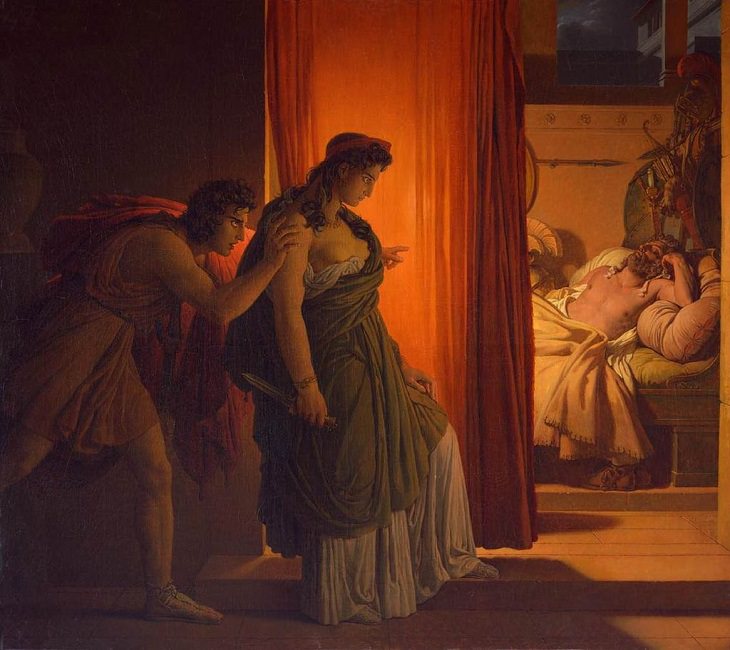
(By Pierre-Narcisse Guérin, Wikimedia Commons)
This painting depicts Clytemnestra, wife of King Agamemnon, hesitating outside of the bedroom where her husband sleeps, with her lover, Aegisthus, preparing to kill the king. Aegisthus, also the king’s cousin, is said to have performed the actual murder. Stories have been largely unclear as to the extent of Clytemnestra’s role in her husband’s death. Her life with the King of Mycenae began with the murder of her first husband, before being forced to marry Agamemnon. Throw in a Trojan War, and things only go downhill from there.
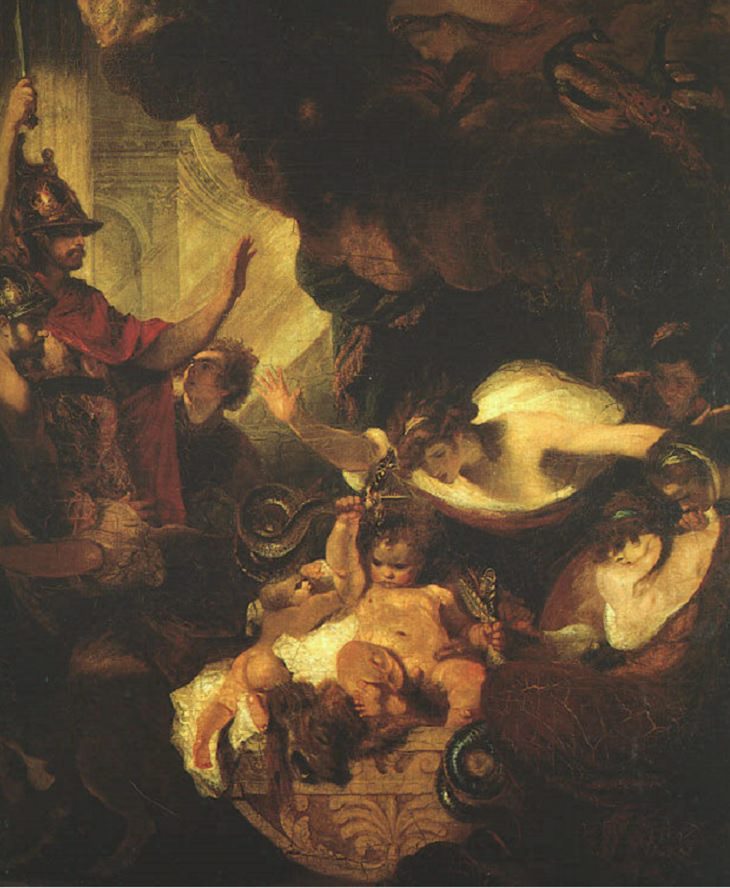
(By Joshua Reynolds, Wikimedia Commons)
Goddess Hera, wife of Zeus, makes the first of many attempts to kill her unfaithful husband’s latest child born from an affair with a mortal woman, Hercules (also known as Heracles). While the eventual hero was still in a crib, in a fit of jealous rage, Hera sends two deadly serpents to attack the sleeping infant. Her plan backfires as the baby Hercules awakens and strangles the two serpents.
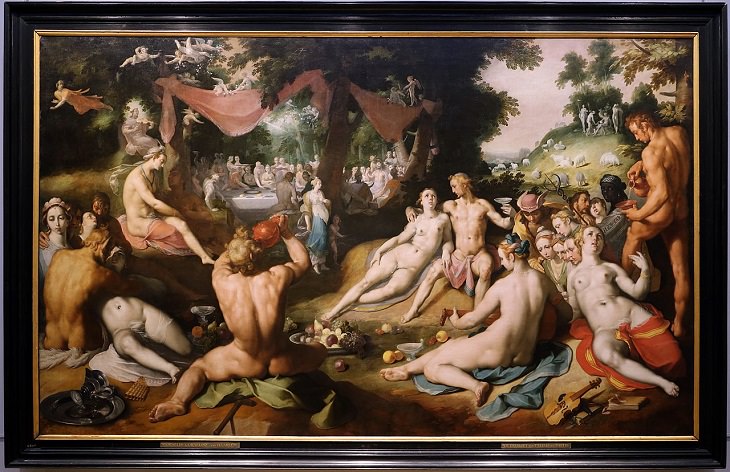
(By Sailko, Wikimedia Commons)
This wedding was a major affair attended by all the Gods of Olympus and organized by Zeus. Of course, he had an ulterior motive. He desired to be with Thetis, a beautiful Nereid or sea-nymph but knew that any child of his born by her would be more powerful than him, so he arranged for her to marry a mortal man named Peleus, believing that such a child would not be born with such power.
The child of Peleus and Thetis was Achilles, so that didn’t go as planned for Zeus. To add to the heavy tension behind this grand ceremony, the Goddess Eris, offended at having not been invited, tossed a Golden Apple into the party that she claimed would only be given “To The Fairest”, sparking a fight between Aphrodite, Hera, and Athena, an event that would eventually set in motion the Trojan War.
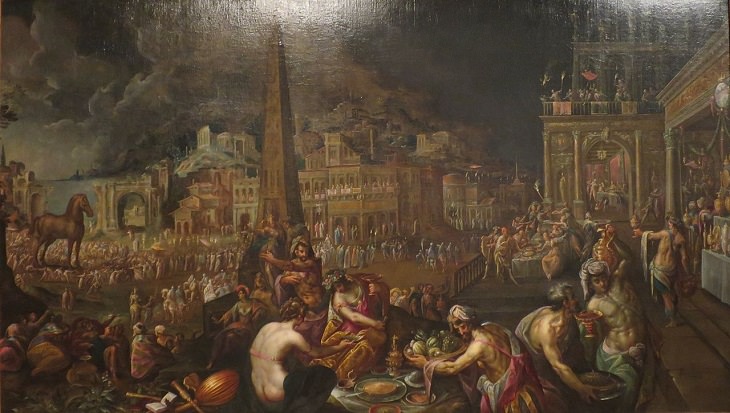
(By Gillis van Valckenborch, Wikimedia Commons)
This picture marks a momentous event in the Illiad, and Greek mythology itself. The entrance of the Wooden Horse shows us the beginning of the end of The Trojan War, which was fought for ten long years at the gates of the city of Troy.
The Greeks, realizing they could not break down the walls protecting the city, built a beautiful gigantic wooden horse as a peace offering to the Trojans, who greedily accepted it believing the Greeks had been defeated. But as soon as the horse was inside the boundaries of the city, a hatch at the bottom opened and a flood of Greek Soldiers poured into the city, which secured their victory.
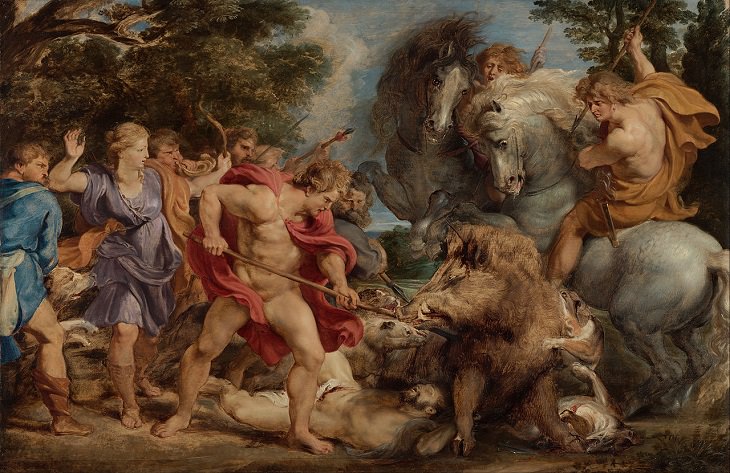
(By Peter Paul Rubens, Wikimedia Commons)
Artemis, angered that no tribute had been paid to her while offerings were made to the other Gods by the King of Calydon, released the massive and terrifying Calydonian Board onto the streets of Calydon. It tore apart the city and was finally brought down by a hunting party assigned by the King and led by the fierce female warrior Atlanta. Though Atlanta was the first to bring down the Boar, it was Meleager, son of the King, who delivered the wound that killed the beast.
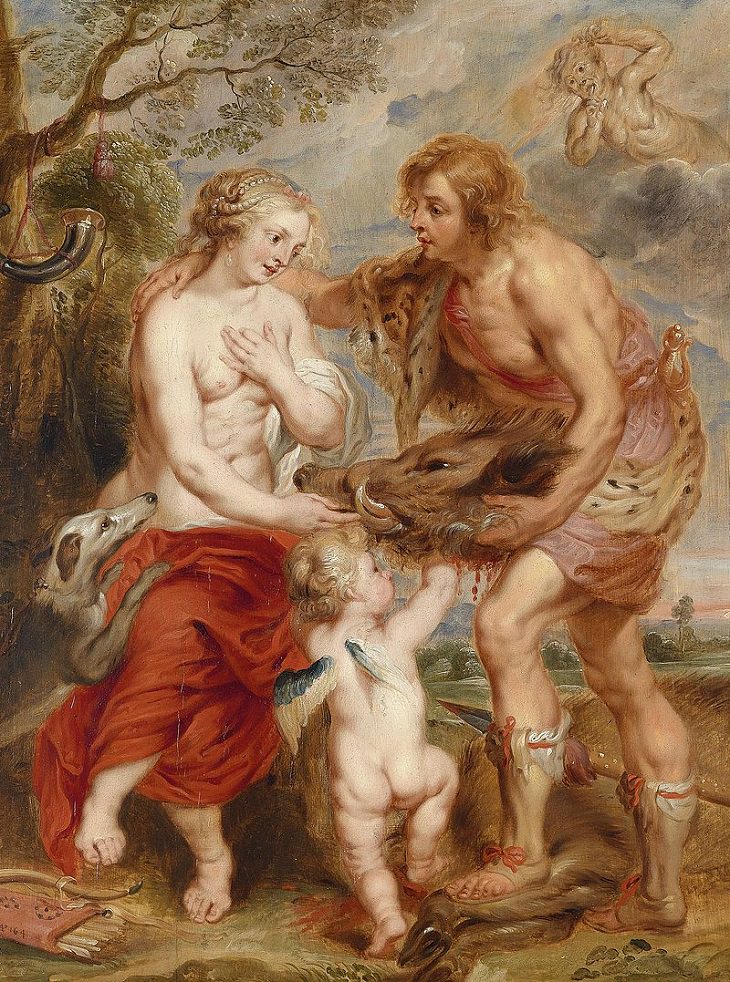
(By Peter Paul Rubens, Wikimedia Commons)
As a show of respect for her bravery and fierce skills in hunting the destructive Calydonian Boar, Prince Meleager, who was given credit for killing the beast, hands the head of the Boar over to Atlanta, the warrior that led the expedition to kill the Boar and who first struck the angry creature.
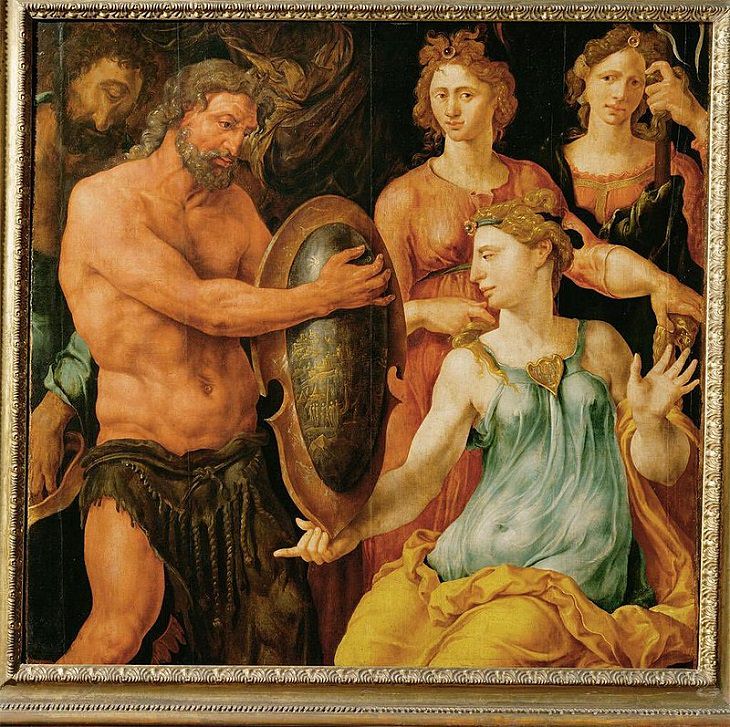
(By Maarten van Heemskerck, Wikimedia Commons)
Vulcan, better known as Hephaestus, was the God of Blacksmiths and Fire and created all manner of weapons and armor for the Gods. Here, Thetis, mother of Achilles, begs the Master Craftsman to create armor for Achilles. The God obliges and is depicted in this painting handing over the shield to Thetis, to deliver to her son during the Trojan War.
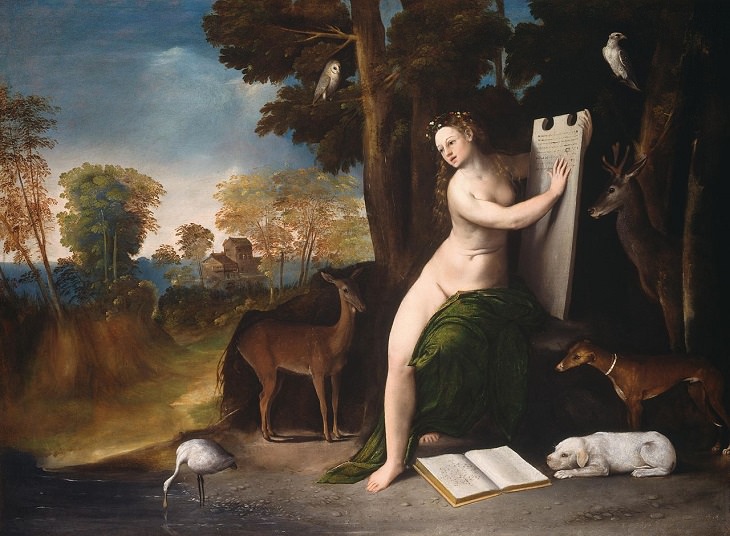
(By Dosso Dossi, Wikimedia Commons)
Circe is the Sorceress introduced in the Odyssey that entrances men and then turns them into her pets. In this painting, she stands surrounded by her “lovers”, the animals, preparing to cast a spell. Her book of spells lay open at her feet and she clings to the tablet, on which the incantation has been inscribed.
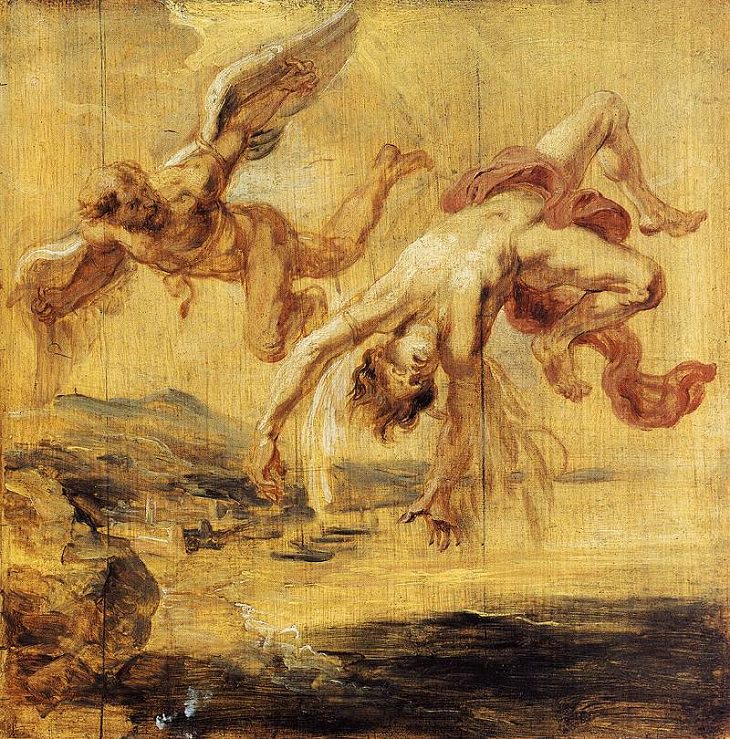
(By Peter Paul Rubens, Wikimedia Commons)
Icarus was the son of Daedalus, a great artisan, and craftsman. With his father’s help, Icarus discovers a way to create real wings using beeswax, which allowed him to fly. Together, Icarus and Daedalus take flight on their newly sculpted wings. Daedalus warns Icarus not to fly too close to the Sun, as the heat would melt the wax of the wings. Bold-headed Icarus did not listen, and soon, under the cruel rays of the Sun, the wings melted and Icarus tumbled out of the sky to his demise.
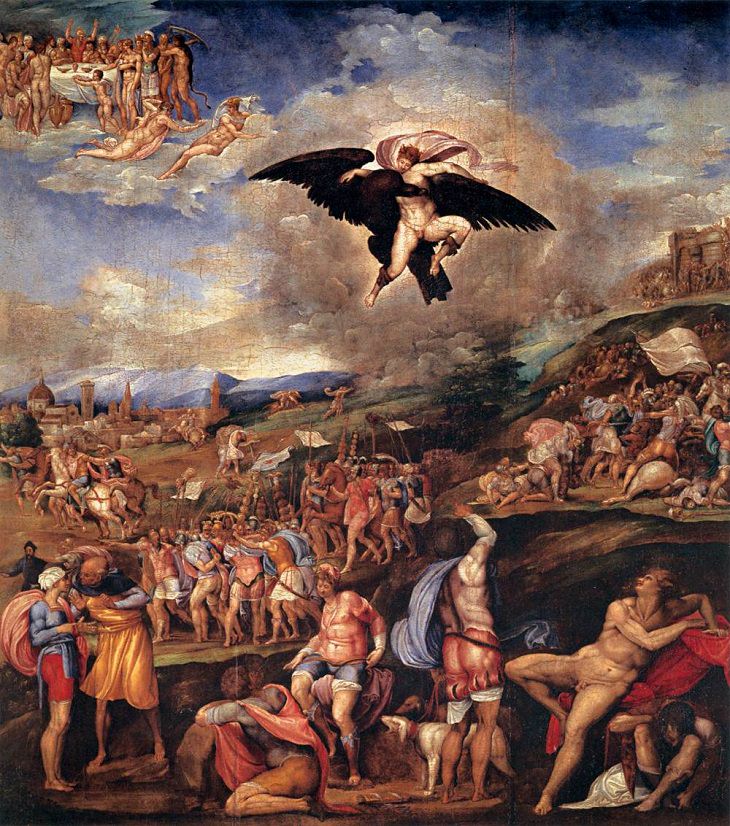
(By Battista Franco Veneziano, Wikimedia Commons)
In 1537, a bloody war was waged between the rebellion uprising wishing to restore the Republic of Florence, and the Medici, a political dynasty that dominated the city’s government. Led by the newly appointed Duke Cosimo I of Florence, the Medici were victorious against this small uprising.
Depicted in this painting, and similar others, in the sky is Ganymede, a young and beautiful shepherd. He is clutched in the talons of Zeus, who disguised himself as an eagle to take Ganymede to Olympus where he would come to serve as Zeus’ cup-bearer.
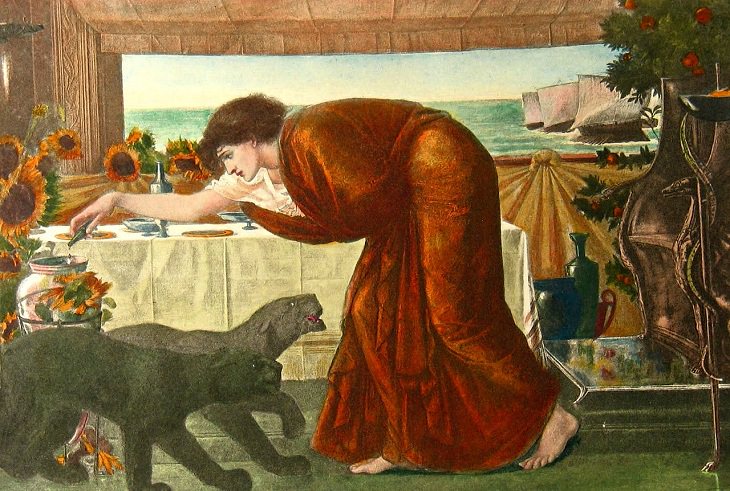
(By Edward Burne-Jones, Wikimedia Commons)
The enticing enchantress Circe prepares her special wine for any new guests that might come. Circe was especially well known for her penchant for turning sailors into fearsome animals, under her control and unconditionally devoted to her. In this painting, you see her victims bowing at her feet, trapped in their animal form. Through the window, ships passing by the island are visible, presumably sailors that are soon to be more of Circe’s pets.
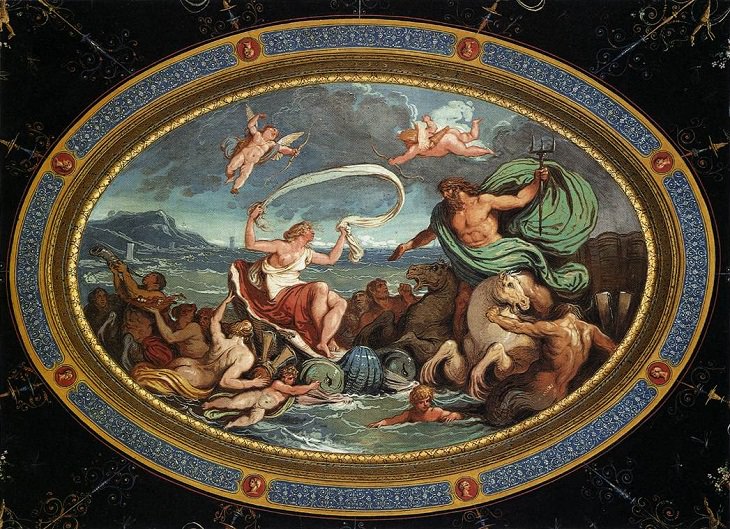
(By Felice Giani, Wikimedia Commons)
Amphitrite was the eldest daughter of Nereus, the Old Man of the Sea, and the oldest of the 50 Nereides (sister of Thetis). When Poseidon, God of the Sea, first pursued her, she fled from him and hid in the Ocean stream at the farthest end of the Universe. It was Delphin, the dolphin-God, who persuaded her to return to Poseidon and rule beside him as Goddess and Queen of the Sea.
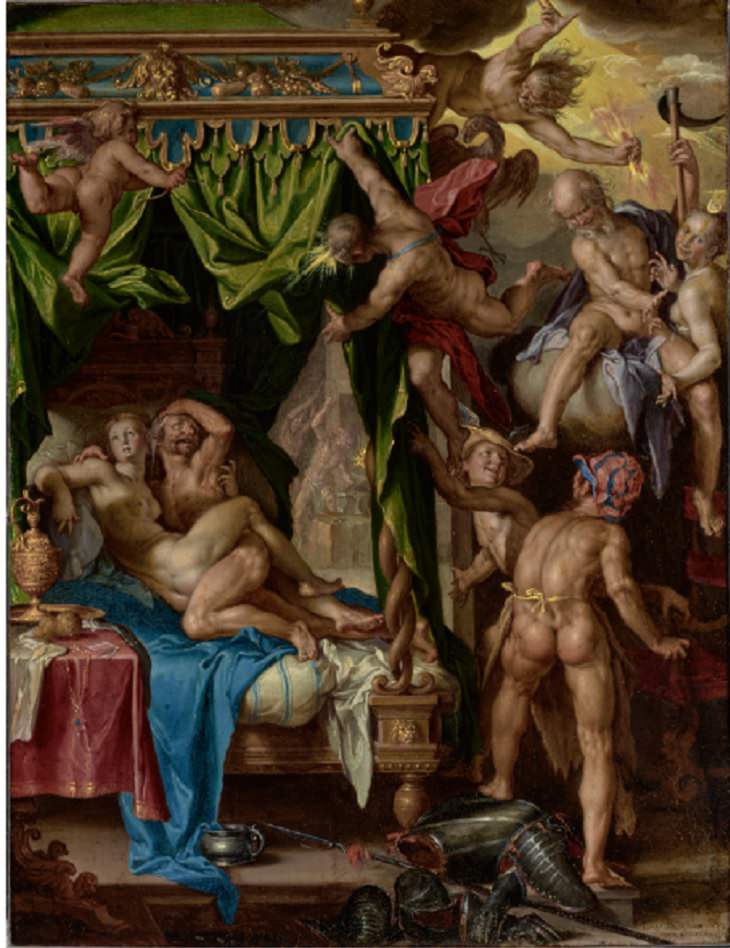
(By Joachim Anthonisz, www.getty.edu)
Venus (Aphrodite) and Mars (Apollo) are caught in flagrante delicto, an extremely compromising position, by Vulcan (Hephaestus), the husband of Venus. Vulcan laid a trap for his unfaithful wife and her lover, and forged a bronze net to trap them in. He covered the bed with a canopy, which is drawn back by Cupid, to display their indiscretion for the other Gods to mock. Meanwhile, Vulcan stands on the armor of Mars while finishes forging his net to the side.
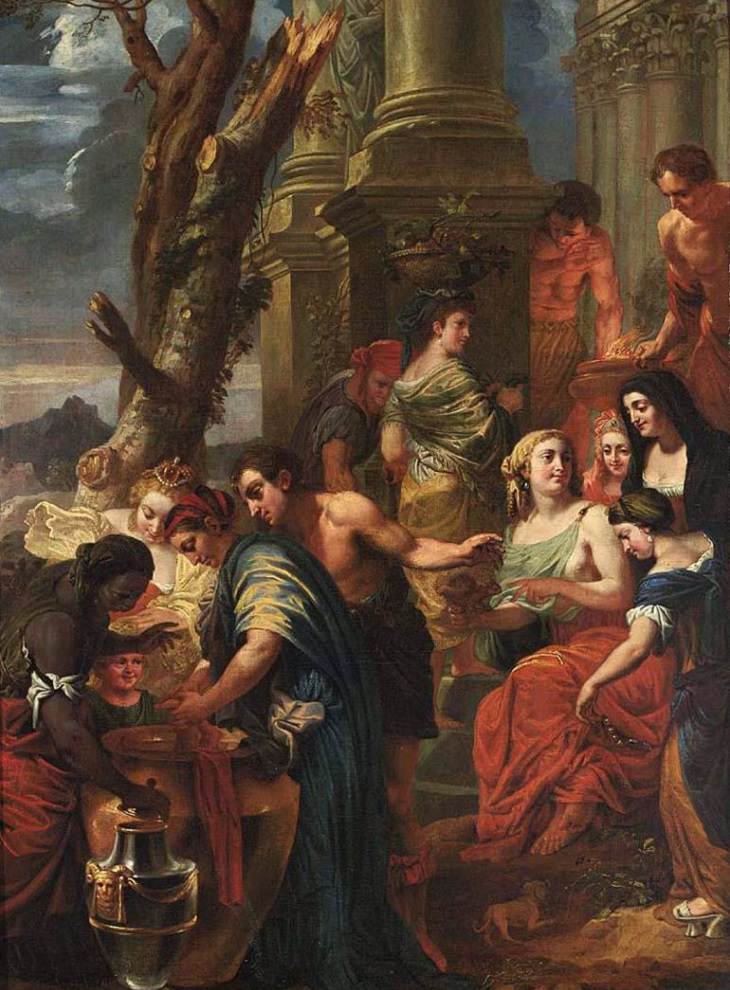
(By Jan-Erasmus Quellinus, Wikimedia Commons)
Thetis, the beautiful daughter of Nereus, was the mother of Achilles. Her beauty had made her the object of affection of many powerful beings, man and God alike, and she knew her son would be the target of their rage and rejection. To protect her son, she held him by the heel and dipped him in a vase filled with water from the River Styx to magically endow him with God-like strength and invulnerability.
Achilles grew to be a great and noble hero and a major player in the Trojan War. However, his one weakness was his heel, the very heel by which his mother held him to dip him into the water of the Styx. His demise finally came when an arrow shot by Paris of Troy and guided by Apollo struck him in the heel.
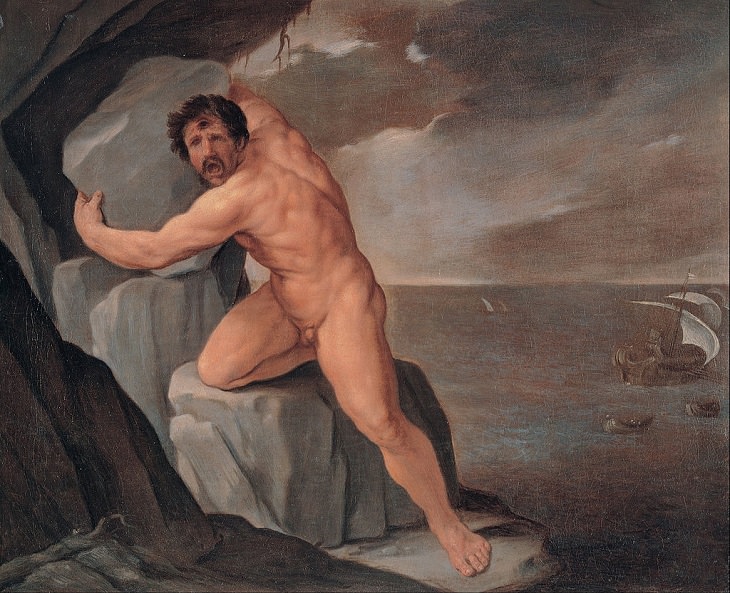
Polyphemus is a cyclops, and perhaps the most famous Cyclops in Greek Mythology. He is the gigantic one-eyed son of Poseidon and plays a major role in the Odyssey.
On discovering Odysseus and his men in his cave, eating his food, he quickly traps all the men in. He keeps them there as prisoners and even devours a few of the crew. Odysseus, ever clever, offers the giant some strong wine, and when the Cyclops asks his name, Odysseus simply replied no one.
Later, when the giant was asleep, Odysseus stabbed his only eye with a wooden stake and fled with his men. When Polyphemus was asked by the other cyclopes who had injured him, the poor giant could only say “No One”. However, Odysseus’ arrogance knew no bounds, and as he left the land of the cyclopes, he revealed his true name to Polyphemus, who had his father, Poseidon, add a few more detours to their journey home.
Related Articles:
Top 16 Paintings Inspired by the Bible
The Stories Behind 10 of the Greatest Works of Art